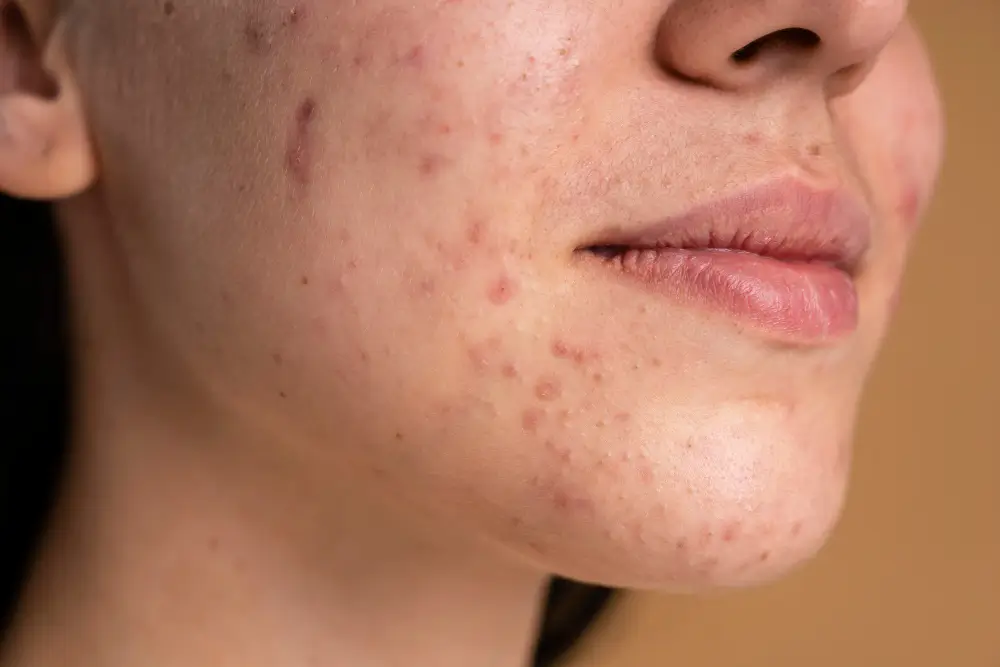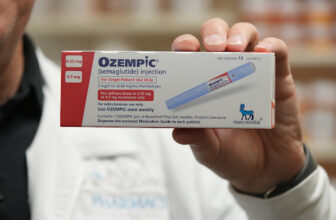
[adinserter block=”3″]
Acne affects adults of all ages and does not just impact young adolescents going through puberty. Between 40% and 50% of adults between the ages of 20 and 40 have some form of acne on their bodies.
While hormonal acne can occur in adults of either gender, it often affects women more than men. According to studies, 25% of women between the ages of 40 and 49 and 50% of women between the ages of 20 and 29 suffer from acne. But are you aware of What causes hormonal acne? Let’s simplify it in this blog.
What exactly is hormonal acne?
Hormonal changes, particularly a rise in androgens like testosterone, cause hormonal acne. Hormonal acne can strike adults at any stage, even though it frequently strikes teenagers during puberty. Adults with underlying medical disorders may develop acne due to hormonal abnormalities.
What are the symptoms of hormonal acne?
The location of the skin outbreak, as well as the person’s gender, age, and lifestyle factors, all affect the primary symptoms of hormonal acne.
Individual differences exist in adult acne symptoms. However, they frequently include:
-
Whiteheads: Also referred to as closed comedones, whiteheads are sealed beneath the surface of your skin. Whiteheads, which frequently appear on the back, breast, or face, can be soft or firm with a white top.
-
Blackheads: These open comedones develop surrounding clogged pores. “Open” refers to the blackhead not being covered by skin. The comedones become dark due to the openness. They may appear on your chest, back, face, or shoulders.
-
Papules: These solid, inflammatory lumps are often conical in shape. They might be the same color as the skin and are tiny. Papules may turn into pimples over time.
-
Pustules: Unlike papules, pustules have a yellow or white, pus-filled tip.
-
Cysts: These painful, pus-filled pimples on inflammatory acne develop deep into the skin. The most painful and severe kind of acne can leave scars.
Where does hormonal acne show up in the skin?
Adults have these eruptions in the T-zone and on their lower cheekbones and jawlines. Back acne is the term for acne that occasionally appears on the back. Hair loss and irregular periods that coincide with skin outbreaks are signs of hormonal acne in adolescent women.
The T-zone, which runs from eye to eye over the brow and down the bridge of the nose in the shape of a “T,” is where hormonal acne typically manifests itself in teenagers. It could also show up on the chin.
Your forehead, upper back, and face, which have the largest sebaceous glands, might all develop hormonal acne. It can occasionally be mistaken for fungal acne, which is an excellent reason to get a formal diagnosis from your dermatologist. Acne scar prevention is possible with early diagnosis and therapy.
Why does hormonal acne occur?
When a person’s hormone levels change, they can get hormonal acne. Changes in testosterone, progesterone, and estrogen levels might result in breakouts of pimples and zits. These variations often occur mostly during menstrual cycles, pregnancy, and menopause.
Here are a few instances:
1 Progesterone-
Fluctuations may also influence acne before your period in sex hormone levels during your menstrual cycle, especially progesterone. Around midcycle, progesterone levels increase. This may stimulate the skin’s sebaceous glands. Progesterone’s contribution to sebum production needs to be clarified, though.
Progesterone overproduction can also make you sweat more and increase body warmth, which can clog your pores. Acne breakouts occur before and during your period due to sebum buildup beneath the skin’s surface, debris, dead skin cells, and germs.
2 Testosterone-
Acne and testosterone are related. Usually, an increase in certain hormones, particularly testosterone, results in hormonal acne. Teenagers may experience hormonal acne due to increased testosterone production throughout puberty. A rise in testosterone may increase the production of sebum by skin glands.
The skin pores are, therefore, clogged due to the excess sebum combined with debris and dead skin cells. Acne-causing bacteria may infect these clogged pores, resulting in pimples. The bacteria and its metabolites may trigger an immune response in your body that results in inflammation, manifesting as redness next to acne lesions.
3 Menopause-
Hormonal changes during menopause may result in acne. Acne sufferers who go through menopause typically have normal androgen levels but low estrogen levels. This imbalance causes an increase in sebum production and an aggravation of acne.
HRT (hormone replacement treatment) can make some people break out in acne.
4 Pregnancy-
Due to the numerous hormonal changes that pregnant women’s bodies go through, hormonal acne frequently affects them throughout pregnancy. Women produce more progesterone than usual during the first trimester. The hormone often causes the body to produce more sebum, which starts an acne eruption. Breakouts frequently last until the baby is born.
While splotchy skin and pimples are more likely to appear during pregnancy, acne does not necessarily occur at this time. Because acne outbreaks frequently have genetic causes, babies may be born with or soon acquire the moderate skin condition known as infant acne. This type of acne naturally disappears. It is not a medical necessity, and there are no skin scars.
Some of the other common causes of hormonal acne are,
-
Stress.
-
Lack of sleep.
-
Any hair and skin care products that don’t have oil-free or non-comedogenic (or non-acnegenic) components that won’t clog pores.
-
Male patients receiving testosterone therapy.
-
Acne in the family (genetic tendency).
-
A side effect of the drug steroids.
-
Current medical issues (metabolic disorders, polycystic ovary syndrome, and other ovarian diseases).
What are the treatment options available for hormonal acne?
The effectiveness of over-the-counter medications may be questionable unless you have minor hormonal acne. Your healthcare practitioner may suggest oral medications to help regulate your hormones and clear your skin. Oral contraceptives and anti-androgen medications are frequent choices.
1 Oral birth control-
Combination oral contraceptives can restore normal testosterone production, which aids in acne reduction. After weighing the advantages and disadvantages, your doctor may recommend combined oral contraceptives if your acne is severe and other treatment options are ineffective.
2 Anti-androgen medications-
Other medications function by lowering the androgen hormone. Most people have healthy androgen levels, but too much of it can lead to acne by raising sebum production. Anti-androgen medications stabilize androgen levels and prevent the body from creating too much of this hormone.
3 Retinoids-
Some persons may require topical retinoids to treat mild hormonal acne. These vitamin A compounds can be purchased over-the-counter as gels, lotions, and creams. A dermatologist may also recommend a product with prescription-strength ingredients to manage your acne.
Conclusion-
Hormone variations, particularly those involving testosterone, cause hormonal acne. Increased testosterone may encourage the sebaceous glands to produce excessive amounts of sebum. This sebum causes clogged pores and acne when it interacts with debris, germs, and dead skin cells.
Due to shifting hormone levels, acne may also develop during menopause. A dermatologist may classify your hormonal acne as mild, moderate, severe, or extremely severe if you visit them. Hormonal acne may be treated with various methods, such as topical treatments, oral contraceptives, or anti-androgen medications.
[adinserter block=”3″]
Credit : Source Post






